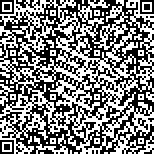|
| |
|
|
| 本文已被:浏览 875次 下载 377次 |

码上扫一扫! |
|
|
| 数字技术驱动的城市景观应用场景与实践路径 |
|
梁佳宁, 李文竹, 李伟健, 龙瀛
|
|
清华大学
|
|
| 摘要: |
| 【目的】在面向未来的“数字景观”发展趋势下,数字技术如何赋能城市景观空间,及其应用场景、与设计方案结合的实践路径等是未来景观设计实践落地的重要内容。【方法】立足国内外相关的理论研究和实践进展,结合“数字景观图层”规划设计项目实践经验对此进行梳理。【结果】系统总结了数字景观技术及其“感知采集—分析计算—调节交互”的作用流程,将应用场景划分为“实体景观空间干预”和“虚拟景观场所营造”,详细探讨各场景运用技术及作用成效,并在此基础上构建数字景观“信息汇总—技术筛选—应用集成”的具体实践路径,为数字景观技术发展演进背景下的未来城市景观设计提供方法指引。【结论】数字景观技术的应用有助于辅助城市景观空间的设计,从而塑造更人性化的城市景观空间。未来仍需在作用机制、设计行为和跨学科合作等方面进一步加强研究。 |
| 关键词: 数字景观 风景园林 公众需求 景观设计 未来城市 |
| DOI:10.12409/j.fjyl.202212110694 |
| 分类号:TU986.2;TU986.4;TU986.3 |
| 基金项目:腾讯科技(深圳)有限公司“WeCityX 科技规划研究计划”(编号 20212001232) |
|
| Application Scenario and Practice Path of Urban Landscape Driven by Digital Technology |
|
LIANG Jianing, LI Wenzhu, LI Weijian, LONG Ying
|
|
Tsinghua University
|
| Abstract: |
| [Objective] The transformation of urban landscape in the fourth industrial revolution is crucial under the impact of disruptive digital technologies. The changing public recreational demands require a mix of online and offline interactions and public-private collaboration. Urban landscape can be transformed with the integration of digital technologies, which adds an information dimension to the existing social and physical dimensions. The urban landscape driven by digital technology ushers in the development characteristics of “transforming from subjective design to objective response, from static display to dynamic interaction, and from real space to virtual-real symbiosis”. Designers need to use urban landscape as a platform to facilitate new forms of social interaction through digital technology. While the application of digital technology in urban landscape has been discussed, most discussions mainly focus on specific practice in landscape planning and design. In view of this, this research aims to propose a systematic approach to identifying the specific development characteristics and application scenarios of digital landscape technology and the practice path for merging digital landscape technology with landscape space design schemes. [Methods] With a focus on urban landscape space directly related to the public’s daily life, this research sorts out relevant theoretical research and practical progress worldwide in combination with “digital landscape layer” project that serves as the basis for practical planning and design. [Results] First, this research provides a systematic summary of digital landscape technologies, focusing on their functioning process of “sensory acquisition – analytical calculation – adjustment interaction”. Such technologies involve both physical and virtual landscape spaces and consider both physical elements and social humanity. Second, the research constructs the application scenarios of urban landscape driven by digital technology. Considering the differences in the forms of landscape spaces and elements and in the selection and application scenarios of digital landscape technologies, the research divides the application scenarios into “physical landscape space intervention” and “virtual landscape place making”, which respectively focus on physical and virtual landscape spaces and elements, but both follow the technical functioning process of “sensory acquisition – analytical calculation – adjustment interaction”. The process of physical intervention involves analyzing the natural ecological conditions of landscape elements and the usage patterns of physical spaces, summarizing multi-source heterogeneous data, and analyzing and diagnosing the collected data through intelligent computing to identify objective laws or predict spatial changes. The ultimate aim is to obtain the best optimization strategy for physical landscape elements and spaces, and to implement targeted interactive adjustments to improve the quality of landscape elements and enhance the efficiency of space use. The application scenario of “virtual landscape place making” emphasizes the use of digital landscape technology to create virtual landscape elements, giving birth to a new type of landscape space that seamlessly integrates reality and virtuality to meet the changing digital needs of the public. The making of virtual landscape place is based on the form of public participation in virtual landscape interaction and various technologies involved, which can be categorized into “virtual experience” with physical participation and “reality enhancement” through mobile participation. Third, the research proposes a practice path for digital landscape technology, which involves aggregating structured information for application of each technology, determining their application priority in the spatiotemporal dimension, and reducing the number of digital technologies through integration to minimize operational difficulty and spatial occupation. Therefore, a proposed practice path for the implementation of digital technologies is “information aggregation – priority screening – technology integration”. Finally, the research analyzes and summarizes the current challenges faced by the application and practice of digital landscape technology. For the costly implementation of some digital landscape technologies in practice, priority should be given to the application of existing basic technologies, the improvement of the compatibility of hardware and software in the implementation process, etc. For the low feasibility of large-scale application of some digital landscape technologies in practice, it is supposed to fully consider local needs, and screen and apply such technologies in combination with specific spatial attributes and temporal conditions. For the ignoring of the needs of special groups by some digital landscape facilities in practice, it is supposed to simplify the interactive process and improve the interface friendliness of such facilities. [Conclusion] This research provides a systematic summary of the development characteristics of digital landscape technologies and their application scenarios for urban landscape space. It highlights the practice path for integrating such technologies with landscape space design schemes, and addresses the challenges faced. With the continuous advancement of technology, landscape design mechanisms are expected to shift towards data driving and active mining, design behavior will become more dynamic, and the creation of landscape spaces will integrate both reality and virtual reality. The implementation process of digital landscape technology will also become more precise, automatic and standardized through interdisciplinary cooperation and practice. Ultimately, these advancements will contribute to the creation of a more intelligent and humane urban landscape environment. |
| Key words: digital landscape landscape architecture public demand landscape design future city |
| 引用本文: | 梁佳宁,李文竹,李伟健,龙瀛.数字技术驱动的城市景观应用场景与实践路径[J].风景园林,2023,30(7):29-35. |
| LIANG Jianing,LI Wenzhu,LI Weijian,LONG Ying.Application Scenario and Practice Path of Urban Landscape Driven by Digital Technology[J].Landscape Architecture Journal, 2023, 30(7):29-35. |
|
|
|
|
|